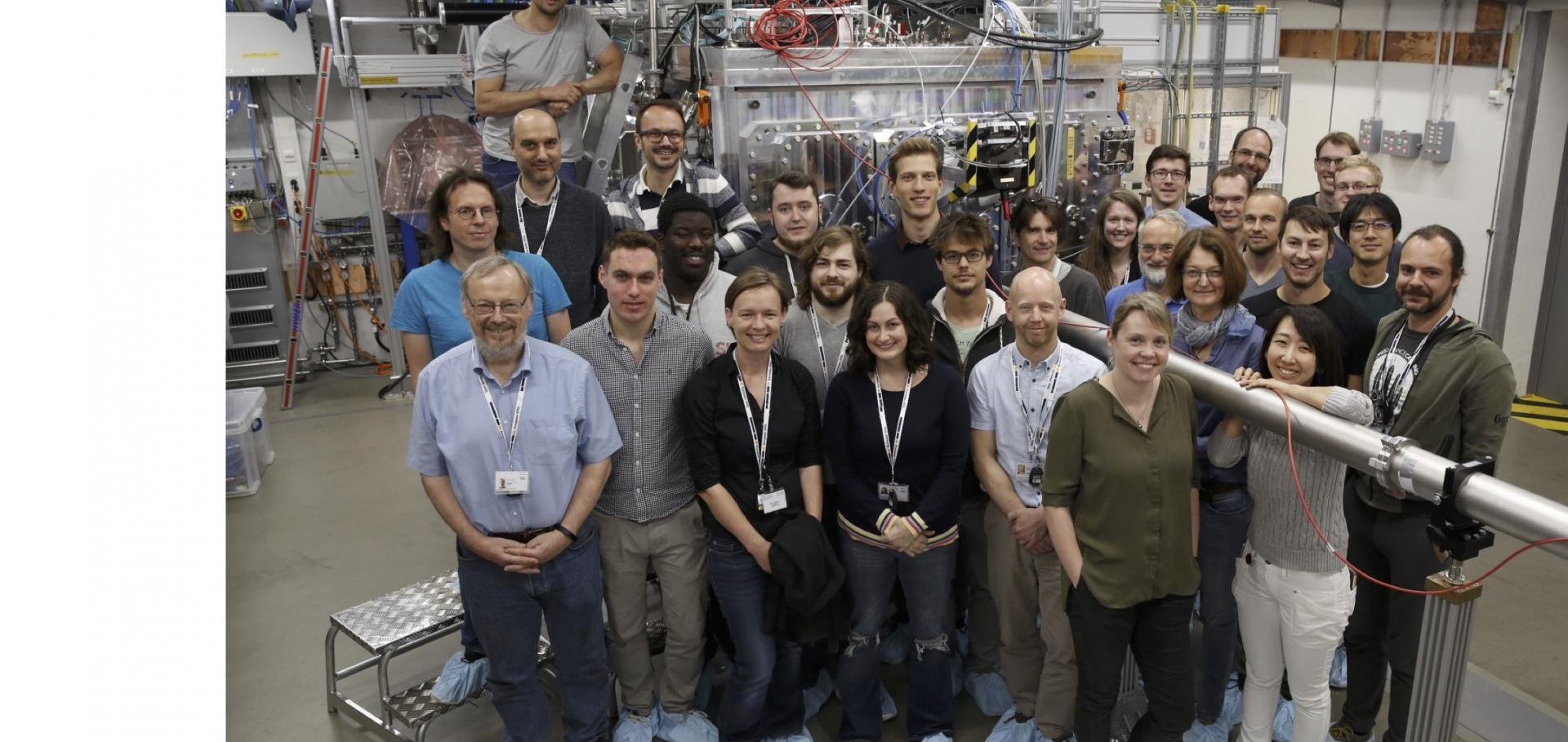Picosecond X-ray diffraction studies of laser-excited acoustic phonons in InSb
APPLIED PHYSICS A-MATERIALS SCIENCE & PROCESSING 75:4 (2002) 467-478
Detailed hydrodynamic and X-ray spectroscopic analysis of a laser-produced rapidly-expanding aluminium plasma
Journal of Quantitative Spectroscopy and Radiative Transfer 71:2-6 (2001) 237-247
Abstract:
We present a detailed analysis of K-shell emission from laser-produced rapidly-expanding Al plasmas. This work forms part of a series of experiments performed at the Vulcan laser facility of the Rutherford Appleton Laboratory, UK. 1-D planar expansion was obtained by over-illuminating A1-microdot targets supported on CH plastic foils. The small size of the A1-plasma ensured high spatial and frequency resolution of the spectra, obtained with a single crystal spectrometer, two vertical dispersion variant double crystal spectrometers, and a vertical dispersion variant Johann Spectrometer. The hydrodynamic properties of the plasma were measured independently by spatially and temporally resolved Thomson scattering, utilizing a 4ω probe beam. This enabled sub- and super-critical densities to be probed relative to the 1ω heater beams. The deduced plasma hydrodynamic conditions are compared with those generated from the 1-D hydro-code Medusa, and the significant differences found in the electron temperature discussed. Synthetic spectra generated from the detailed term collisional radiative non-LTE atomic physics code Fly are compared with the experimental spectra for the measured hydrodynamic parameters, and for those taken from Medusa. Excellent agreement is only found for both the H- and He-like A1 series when careful account is taken of the temporal evolution of the electron temperature. © 2001 Published by Elsevier Science Ltd.Extension of the code suite FLY to a multi-cell postproces sor for hydrodynamic plasma simulation codes
Journal of Quantitative Spectroscopy and Radiative Transfer 71:2-6 (2001) 721-728
Abstract:
The extension of the atomic kinetics code suite FLY to a multi-cell postprocessor for hydrodynamic plasma simulation codes, called SWARM is presented. First, the collisional radiative model on which FLY is based is reviewed as far as it corresponds to the model in SWARM, then more attention is paid to the differences. Multiple cell simulations require a more complicated algorithm to solve the radiative transfer problem, taking into account geometry and point of observation. The feedback of the radiation on the atomic state populations is taken into account in a more sophisticated escape factor model. Finally, the limitations of the model are discussed. © 2001 Elsevier Science Ltd. All rights reserved.Modeling a sonoluminescing bubble as a plasma
Journal of Quantitative Spectroscopy and Radiative Transfer 71:2-6 (2001) 215-223
Abstract:
We present detailed simulations of the optical spectra emitted from an Argon plasma whose conditions correspond to those thought to prevail within sonoluminescing bubbles. The model incorporates detailed atomic physics based on atomic data from the Opacity Project database, and includes bound-bound, bound-free, and free-free transitions. Line broadening is treated by use of the modified semi-empirical method. The spectral model is used as a postprocessor of hydrodynamic simulations. We find good agreement with experimental spectra and accurately reproduce experimental pulse widths. We also predict that whilst the majority of the optical emission corresponds to bound-free transitions, there remains the possibility of observing line emission in both the UV and IR regions of the spectrum. © 2001 Elsevier Science Ltd. All rights reserved.Measurements of the XUV mass absorption coefficient of an overdense liquid metal
Journal of Physics B Atomic Molecular and Optical Physics 34:17 (2001) L565-L570


